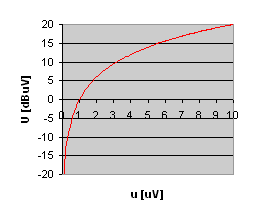If your location is not listed, please select one of the following:
polskiSvenskaespañolItaliaFrançaisEnglishDeutschFrançaisItaliaespañolPortuguês日本語한국의русскийMaoričeštinaSlovenskáΕλλάδαDanskEuskeraSuomiromânescíslenskaSvenskaMelayuالعربيةGaeilgeGalegoTürk diliKongeriketRepublika e ShqipërisëБеларусьEesti Vabariikಕನ್ನಡkannaḍalietuviųLatviešuAyitiසිංහලAzərbaycanภาษาไทยनेपालीtiếng ViệtPilipinoსაქართველოCambodiaپښتوТоҷикӣAfrikaansKiswahilimalaɡasʲفارسیతెలుగుpolski
If your location is not listed, please select one of the following:
polskiSvenskaespañolItaliaFrançaisEnglishDeutschFrançaisItaliaespañolPortuguês日本語한국의русскийMaoričeštinaSlovenskáΕλλάδαDanskEuskeraSuomiromânescíslenskaSvenskaMelayuالعربيةGaeilgeGalegoTürk diliKongeriketRepublika e ShqipërisëБеларусьEesti Vabariikಕನ್ನಡkannaḍalietuviųLatviešuAyitiසිංහලAzərbaycanภาษาไทยनेपालीtiếng ViệtPilipinoსაქართველოCambodiaپښتوТоҷикӣAfrikaansKiswahilimalaɡasʲفارسیతెలుగుpolski
- LED current limiting resistor calculation
- Triode bias voltage calculator
- Capacitance time constant calculator
- Triode switch saturation calculator
- Plate capacitance capacitance calculator
- Battery life calculation
- Charging time calculation of rechargeable battery
- Service life of lithium manganese rechargeable battery
- Application and selection calculator of voltage regulator diode
- LED circuit power calculator
- Working time calculation of ultracapacitor
- Polyester capacitor color code calculator
- FET Buffer Deviation Calculator
- 5 color ring resistance value online calculator
- Four-ring resistance online calculator
- Voltage regulator current limiting resistor calculator
- Parallel resistance calculator
- Resistance divider calculator
- Online capacitor series calculator
- On line calculation of resistance, current and voltage
- Online power calculator
- Unit conversion of inductance
- Inductance parallel calculator
- Inductance inductance calculator
- Spiral coil inductance calculator
- Iron powder core toroidal core online calculator
- Iron powder core magnetic ring model specifications Daquan
- Ferrite magnetic ring online calculator
- Inductive and capacitive reactance online calculator
- Flux density calculator
- Multilayer Coil Inductance Value Design Calculator
- Single layer coil inductance calculation
- Air core inductance and Q value online calculator
- Wavelength and frequency relationship and conversion tools
- J-type transmit antenna calculator
- Trap Antenna Design Calculator
- Electronic divider filter calculator
- W, dBW and dBm conversion online calculator
- V, dBV and dBuV conversion online calculator
- ERP/ERIP Calculator
- Voltage standing wave ratio loss calculator
- FM and TV channel frequency conversion tools
- Microstrip line characteristic impedance calculator
- Filter cutoff frequency online calculator
- Operational Amplifier Low Pass Filter Calculator
- Op amp high pass filter calculator
- Bandpass Filter Design Calculator
- OpAmp Op Amp Voltage Gain Calculator
- Chebyshev Pi LC High-Pass Filter Calculator
- Chebyshev Pi LC Low Pass Filter Calculator
- Butterworth Pi LC High-Pass Filter Calculator
- Butterworth Pi LC Low Pass Filter Calculator
- High frequency filter parameter calculator
- Active Speech Filter Online Calculator
- Calculator online calculation
- Length converter
- Fahrenheit and Celsius Temperature Converter
- Smart Advanced Calculator online use
- Multiple party / open n power calculator
- Square root / square root calculator
- Online cube root calculator
- Power unit converter
- Power energy and heat converter
- KB and GB unit online convertor
- Area converter
- Frequency unit online conversion tool
- Trigonometric function online calculator
- Volume and capacity converter
- Online temperature converter
- Pressure converter
- Weight converter
- Byte unit conversion
- Resistor unit on line converter
- Air volume converter
- 555 Timing Circuit Calculator
- 555 timer frequency calculation
- MSP430 microcontroller UART register
- Coherent sampling online calculator
- Constant Current Source Online Calculator
- 555 monostable circuit parameter calculator
- Data conversion jitter calculator
- Wheatstone Bridge Calculator
- Hysteresis comparator calculator
- Differential amplifier calculator
- Real time clock (RTC) calculator
- LC circuit frequency online calculator
- RC circuit instantaneous voltage calculation
- Chip heat dissipation area calculation
- Phase locked loop VCO frequency calculator
- DC-DC circuit online calculator
- RC time constant calculator
- Phase-locked loop filter
- Digital to Analog Converter Indicator Online Calculator
- Preamplifier design calculator
- MC34063 online calculator
- LM117/LM317 output voltage calculator
V, dBV and dBuV conversion online calculator
dB is basically a proportional value, which is a unit of expression of a multiple. That is, the relative difference between the test data and the reference standard.
dB = 10 log(P1/P2)= 20 log(V1 / V2)
V1 is the test data and V2 is the reference standard. For example, the V1 data is twice that of V2, which is 6 dB. (P stands for power and V stands for voltage).
dBV is a 0dB reference standard of 1V, and dBuV is a 0dB reference standard of 1uV. (Generally speaking, the signal strength dB or dBu is actually dBuV)
 Enter the corresponding value and click "convert" to convert the calculation.
Enter the corresponding value and click "convert" to convert the calculation.
